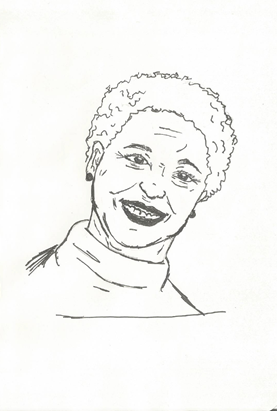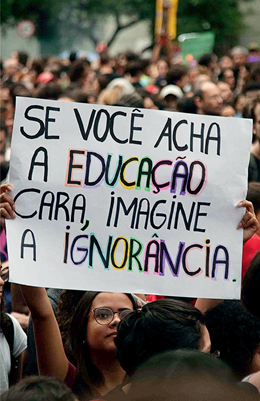by Andreia Vicente da Silva – Originally published in Portuguese April 22, 2020 link
On March 25th, 2020, the Ministry of Health published a handbook that defines guidelines on the “Dead body management in the context of the novel coronavirus (COVID-19)”. This handbook provides technical recommendations to avoid contamination of both health professionals, who handle these bodies directly, and relatives during burials. Nonetheless, what do these guidelines mean regarding funerals on the relatives’ perspective? What are the impacts of coronavirus on death rituals?
The body of the deceased diagnosed with coronavirus is treated technically as highly contaminating. Because contamination occurs through person-to-person contact and by touching objects and surfaces, the possibility of contagion through approximation and contact with the deceased remains active for 24 hours or more. Hence, the dead body is considered a polluter, not only for the decomposition itself but also for viral contamination. It is technically classified as potentially harmful to health because it houses a “class 3” biological agent that is considered challenging to contain. The procedure guided by the World Health Organization recommends the use of personal protective equipment (PPE) by professionals who deal directly with the infected person, avoiding exposure to blood, body fluids, objects, and contaminated surfaces.
Due to the imminent danger, the body must be quickly isolated and removed so that the virus in it is not transmitted. It is recognized by only one family member or legally responsible person who must maintain a minimum distance of two meters. If possible, recognition should
be done by photography, thus avoiding the approach of the body as much as possible.
Tanatopraxy services involving conservation, sanitation, and cosmetic treatment of the body are not recommended. Autopsies are not performed as well if the case is confirmed. All-natural and drainage orifices must be strictly plugged, and the body wrapped in three layers of sealed impermeable coating, whose label must describe “COVID-19, risk class 3 biological agent”. At the end of the management process, the body goes to the cemetery in a sealed coffin. A death certificate is delivered to the family describing the disease which caused the death, as COVID-19 and ICD B34.2 (in case of unspecified infection) or U04.9 (in the case of a severe acute respiratory syndrome).
All of these technical procedures, guided by international standards, have a direct impact on death rituals. Even when patients are still in the hospital, family members cannot accompany them and give them affection and attention. The isolation imposed on the sick person in a private room or in a cohort (in case of sharing space for several beds) prevents the relatives and friends from approaching. It prohibits the convalescent gestures of affection, words, or religious demonstrations that are characteristic in hospitalizations whose serious condition of the patient is decreed by the medical team. The patient remains alone in a sealed room. All possible touches are avoided. The loneliness of the dying of the coronavirus is an irrefutable reality. Huge frustration is reported by those who needed to allow their loved ones to have isolated finitude. The mourners narrate enormous sadness when they remember that they
could not approach and touch their relatives when they were still alive. Funerals are not advisable for bodies contaminated with coronavirus. When a loved one diagnosed or suspect of having the virus dies – in cases of unavailability of confirmation tests – family members do not have the opportunity to come together, cry their dead, embrace, tell their stories, and make the rupture of a life full of relationships. Those bonds that traditionally crowd people cannot be triggered. “My father just died. There will be no funeral. Don’t come to say hello”- wrote a sad daughter in Rio de Janeiro. The body cannot be with them because it now houses the infectious agent. The living need to protect themselves from the body of their dead loved one and also from contact with relatives and friends. Funerals are an essential part of the death rituals precisely because it allows the living physically gathered a moment of transition and elaboration of the social change that death imposes. It is at that moment that the transformation of the living into the dead begins by witnessing the body, observing the face of death, and touching the body that proves that that relative and friend is now an ancestor. The moments in the presence of that lifeless matter are a way of becoming human, of elaborating the metamorphosis of the one with whom we once
lived. It is necessary to touch, speak, cry, and laugh at the dead person. The funeral is part of the loss process. “From the hospital to the cemetery” – I heard from a nurse who works at the Western Paraná University Hospital (HUOP/Unioeste) when explaining that there is no possibility of a funeral in a closed chapel or even time for the preparation and choice of funeral services.
Both the Ministry of Health’s dead body management handbook and Technical Guidance 04-2020 GVIMS-GGTES of the Brazilian Health Regulatory Agency (ANVISA) are imperative in indicating that the family should receive information about the risk of contamination of their deceased and advise that “the dignity of the dead, their culture, traditions” be respected throughout the funeral process. Still, the few mourners who go to the cemetery – according to reports, an average five people -, in addition to having to deal with the pain of the loss of a
relative, also have to deal with the enormous frustration of a funeral that could not occur. It remains for them to watch their relative being buried very quickly, sometimes in shallow and improvised graves – a situation that may become more and more recurrent if predictions of the pandemic’s advance become real data in cemeteries that are already crowded in most Brazilian cities. In large capitals, such as São Paulo, the bodies of the dead are already taken in closed coffins and left on display in open spaces in cemeteries for a maximum of 10 minutes, so that very few relatives can say goodbye to their dead. No agglomerations are indicated, and the coffin remains sealed.

Quick burials, desolate relatives, frustrated grief. The advance of the pandemic in Brazil proves the importance of ritualized activities that are not perceived in normal times. The quarantine to which we are subjected is only one facet of the advance of a microorganism that subverts logic and interrupts even the most traditional activities. Attachment to routine, sacred notions, the idea of asepsis, and other elements that make up our Western imagination must be reviewed and restructured in the process of building a new way of being that intends to be imposed by a non-human agent. This agent does not care for or consider distinctions of class, gender, color, or even religion. The funeral in times of coronavirus will be denied to everyone without distinction.
Andreia Vicente da Silva is an anthropologist and adjunct professor in anthropology at the Western Paraná State University (UNIOESTE).





